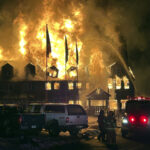Workers’ comp in California is continuing its slide downhill, according to a recently released report from the WCIRB. The mid-year report found that loss development on the 1998 and 1999 accident years during the second quarter was at record levels, which significantly increased the WCIRB’s estimate of ultimate costs for those years.
The WCIRB is now estimating ultimate loss ratios of 108 percent and 115 percent for 1998 and 1999, which produces combined loss and expense ratios of 149 percent for 1998 and 153 percent for the 1999 accident year. According to Dave Bellusci, the WCIRB’s chief actuary, “due to record high loss development in the first half of 2000, 1998 and 1999 accident year losses are emerging at levels far worse than anticipated. Combining this loss development with average pricing, which is well below the advisory loss cost level approved by the commissioner, has produced by far the highest California workers’ comp combined ratios ever seen. By way of comparison, for the fifteen years prior to pricing deregulation in 1995, the average post-policyholder dividend combined ratio was 109 percent.”
The WCIRB also reported that total reserves reported for accident years through 1999 are $5.1 less than the WCIRB’s estimate of losses. According to Bellusci, “this deficiency could grow dramatically by yearend if the level of losses in 2000 is similar to the level of losses for 1999 unless there is significant reserve strengthening. While these estimates are based on industrywide averages and the adequacy of any individual company’s reserves is a function of their underwriting, claims and reserving practices as well as their reinsurance arrangements, industrywide deficiencies of this magnitude will seriously impede the industry’s ability to recover and produce results close to their historical norms.”
Other highlights of the report include:
* California written premium (gross of deductible credits) for the first six months of 2000 is $4.4 billion, which is more than 26 percent above the comparable 1999 amount.
* Average insurer rates for policies written in the first six months of 2000 are 19 percent above the average rates charged on 1999 policies. However, the average insurer-charged rates on year 2000 policies for the first six months of 2000 are 7 percent below the approved year 2000 pure premium rates.
* Ultimate accident year losses for 1999 are projected by the WCIRB to be $8.0 billion. This amount is $1 billion above 1998.
* The 2000 calendar year loss ratio reported by insurers as of June 30, 2000 is 94 percent, ten percentage points below the ratio for the first six months of 1999.
* Indemnity claim frequency in 1999 is estimated to be more than 7 percent lower than in 1998. This is the largest frequency decrease since 1992 and represents the lowest frequency rate since the WCIRB began recording this information in 1989. This frequency decline appears to continue into 2000.
* The WCIRB projects the average cost of a 1999 indemnity claim will be $33,022, which is 15 percent greater than in 1998 and 73 percent greater than in 1994.
Copies of the WCIRB’s report can be obtained for a nominal cost by contacting the WCIRB Customer Service Department at (888) CA-WCIRB and referencing WCIRB Bulletin 2000-13.
Topics California Profit Loss
Was this article valuable?
Here are more articles you may enjoy.


 Hartford: 10-Year Analysis Shows Shifts in Common, Expensive Small-Business Claims
Hartford: 10-Year Analysis Shows Shifts in Common, Expensive Small-Business Claims  North Carolina Sting Operation Alleges Roofer Damaged Shingles to File Claim
North Carolina Sting Operation Alleges Roofer Damaged Shingles to File Claim  Abbott Presses Congress for Legal Shield Over Preemie Baby Formula Lawsuits
Abbott Presses Congress for Legal Shield Over Preemie Baby Formula Lawsuits  Owner of Historic Minnesota Resort Charged With Arson, Insurance Fraud
Owner of Historic Minnesota Resort Charged With Arson, Insurance Fraud 

